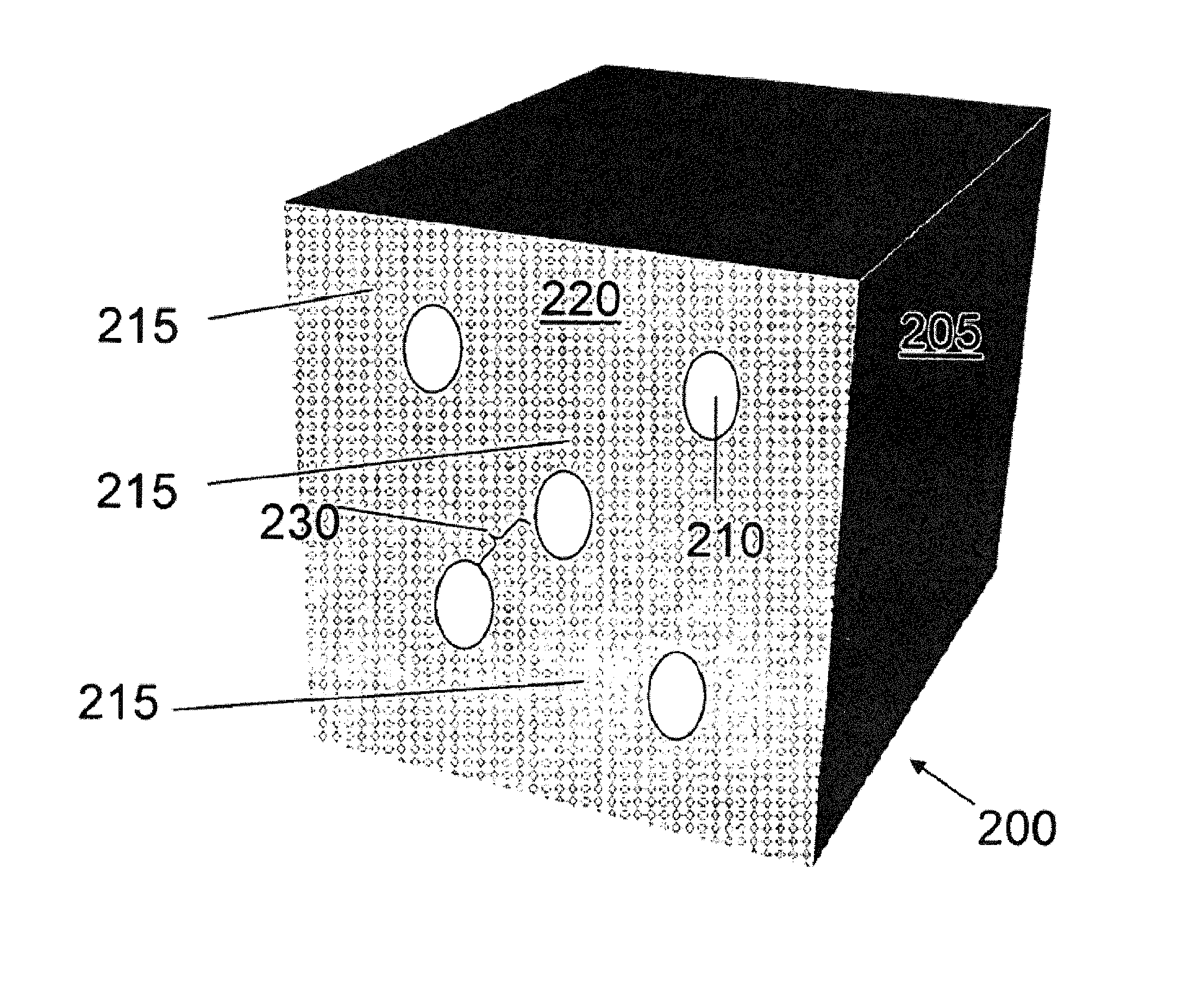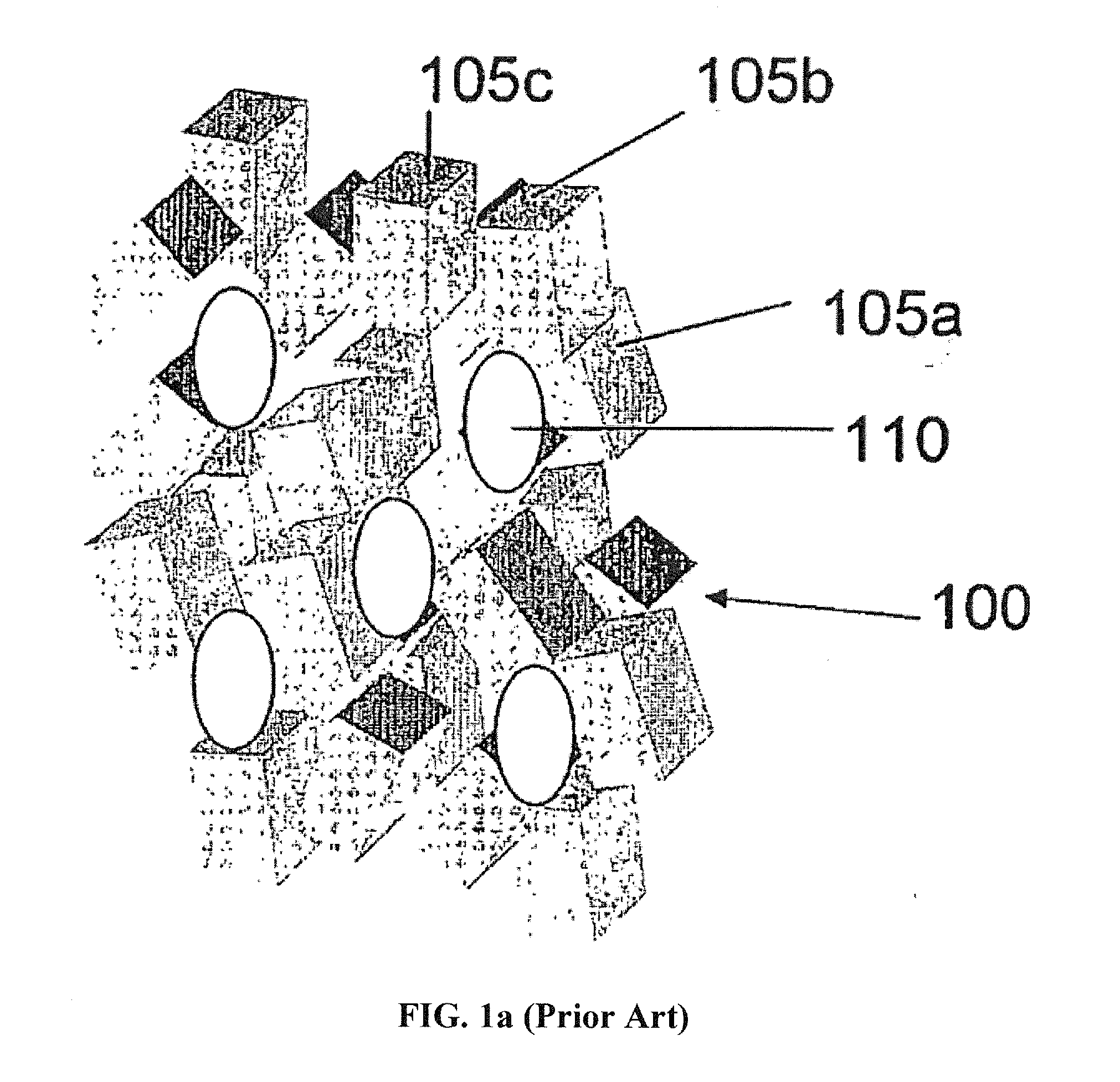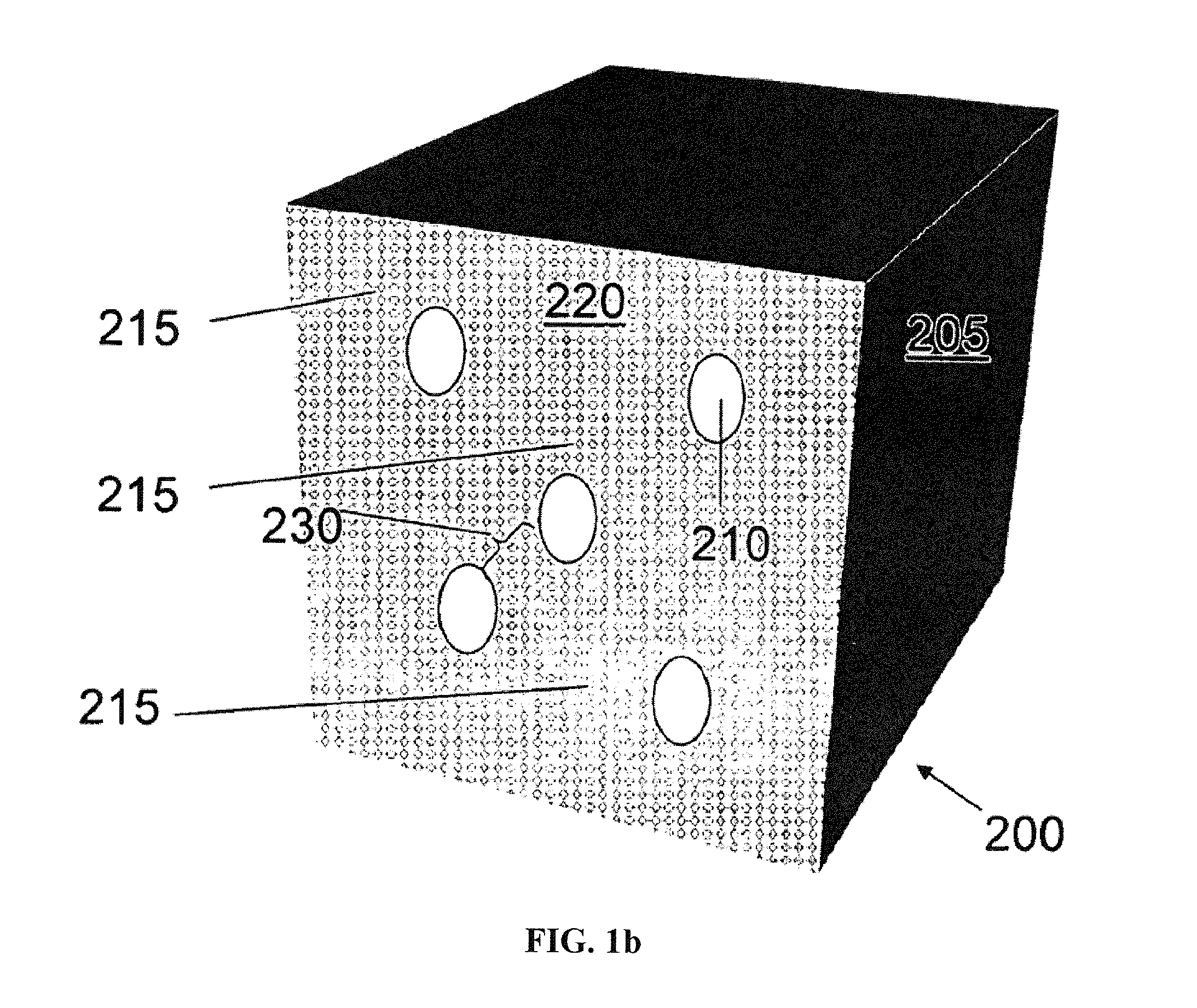Dehydroxylation pretreatment of inorganic materials in mesopore introduction process
a technology of inorganic materials and introduction treatment, which is applied in the direction of ferrierite aluminosilicate zeolite, silicon compounds, and mordenite aluminosilicate zeolite, etc., which can solve the problems of high ion exchange capability, low ion exchange capacity,
- Summary
- Abstract
- Description
- Claims
- Application Information
AI Technical Summary
Problems solved by technology
Method used
Image
Examples
example 1
Pretreatment and Riving of ZSM-5 Zeolite with Silica-to-Alumina Ratio of 23
[0224]40 grams of NH4-ZSM-5 having a silica-to-alumina ratio (“SAR”) of 23 was heated at 900° C. for 1 hour. The cooled product was treated with 0.19 mL of 50% NaOH solution, 0.5 g of cetyltrimethylammonium bromide (“CTAB”), and 4 g of water per gram of zeolite (hydrated) at 80° C. for 4 hours. The product was washed three times with hot (−80° C.) water and dried. This material was exchanged twice at 25° C. with 10 mL of 2N NH4NO3 per gram of product, with stirring, for 30 minutes. The product was calcined in flowing nitrogen gas for 1 hour at 600° C., cooled to 300° C., heated in flowing dry air to 600° C., and held at 600° C. for 2 hours. The product was characterized via x-ray diffraction, temperature programmed ammonia desorption (“TPAD”) for acidity, and argon gas adsorption for micropore and mesopore volume. This process was repeated for a second sample except using an initial heating temperature of 825...
example 2
Pretreatment and Riving of ZSM-5 Zeolite with Silica-to-Alumina Ratio of 23
[0225]40 grams of NH4-ZSM-5 having a SAR of 23 were heated at 900° C. for 1 hour. The cooled product was treated with 0.03 mL of 50% NaOH solution, 0.5 g of CTAB, and 4 g of water per gram of zeolite (hydrated) at 80° C. for 4 hours. The product was washed three times with hot (−80° C.) water and dried. This material was exchanged twice at 80° C. with 10 mL of 2N NH4NO3 per gram of product, with stirring, for 60 minutes. The product was calcined in flowing nitrogen gas for 1 hour at 600° C., cooled to 300° C., heated in flowing dry air to 600° C., and held at 600° C. for 2 hours. The product was characterized via x-ray diffraction, temperature programmed ammonia desorption (“TPAD”) for acidity, and argon gas adsorption for micropore and mesopore volume.
[0226]This process was repeated for NaOH addition amounts of 0.0, 0.06, 0.09 and 0.12 mL per gram of zeolite. The results, given in Table 2 below, demonstrate ...
example 3
Pretreatment and Riving of ZSM-5 Zeolite with Silica-to-Alumina Ratio of 50
[0227]120 grams of NH4-ZSM-5 having a SAR of 50 were heated at 900° C. for 1 hour. The cooled product was treated with 0.08 g of 50% NaOH solution, 0.5 g of CTAB, and 4 g of water per gram of zeolite (hydrated) at 80° C. for 4 hours. The product was washed three times with hot (−80° C.) water and dried. The resulting material was exchanged twice at 80° C. with 10 mL of 2N NH4NO3 per gram of product, with stirring, for 60 minutes. The product was calcined in flowing nitrogen gas for 1 hour at 600° C., cooled to 300° C., heated in flowing dry air to 600° C., and held at 600° C. for 2 hours. The product was characterized via x-ray diffraction, temperature programmed ammonia desorption (“TPAD”) for acidity, and argon gas adsorption for micropore and mesopore volume.
[0228]This process was repeated for NaOH addition amounts of 0.0, 0.14, 0.20, 0.25 and 0.30 g per gram of zeolite. The results, given in Table 2 below...
PUM
 Login to View More
Login to View More Abstract
Description
Claims
Application Information
 Login to View More
Login to View More - R&D
- Intellectual Property
- Life Sciences
- Materials
- Tech Scout
- Unparalleled Data Quality
- Higher Quality Content
- 60% Fewer Hallucinations
Browse by: Latest US Patents, China's latest patents, Technical Efficacy Thesaurus, Application Domain, Technology Topic, Popular Technical Reports.
© 2025 PatSnap. All rights reserved.Legal|Privacy policy|Modern Slavery Act Transparency Statement|Sitemap|About US| Contact US: help@patsnap.com



